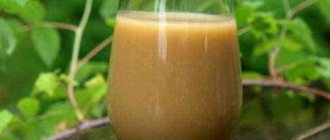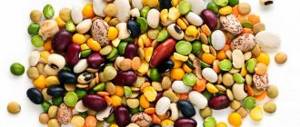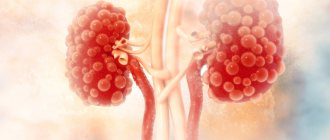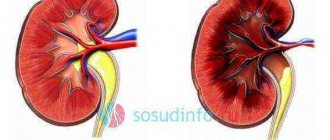Grapes are an amazing plant; they began to be grown in Georgia more than 8,000 years ago. In ancient times, they knew how grapes affect the kidneys, liver, lungs and other organs of the human body. Ampelotherapy is the name given to the treatment procedure with grapes and products prepared on its basis. Treatment with these berries, juice, seed extract, etc. specialists combine it with climatotherapy at the resorts of the Crimea, the Caucasus and other areas where grapes grow.
Grapes are often used to treat kidney diseases.
The tasty and healthy product has a wide variety of vitamins, macro- and microelements. 100 g of grapes contain 40% of the organic acids needed per day for humans, almost the same amount of silicon. The same 100 g of product can replenish the body’s daily requirement of cobalt, vanadium, bromine, magnesium and other substances by 15-25%. The chemical composition of grape juice has a complex composition, it is similar to the composition of alkaline waters of natural origin. That is why doctors equate treatment with mineral waters with healing with grapes and viticultural products. The largest proportion of grapes is liquid, approximately 80%. The second significant component in the described product is sugar, it contains from 20-30%. A substantial amount of sugar makes the product nutritious and necessary for the production of glycogen, a substance produced in the body from grape sugar.
Grape juice is good for the kidneys.
Grape juice is an excellent expectorant, diuretic and laxative. Berries help prevent and treat various diseases of the lungs, liver and kidneys. Ampelotherapy has a beneficial effect on people with a weakened nervous system and helps lower blood cholesterol levels. Grape juice has a great positive effect on patients with diseases of the cardiovascular system.
It is worth noting that sugar obtained from grapes helps reduce intestinal putrefaction and support the choleretic process. Many people mistake grapes for a natural antioxidant that stimulates the body’s excretory functions and promotes cleansing. Experts attach particular importance to the effect of grapes on the kidneys.
Beneficial properties of grapes - a natural medicine for the kidneys
You will certainly pay attention to these statistics: according to the American Kidney Foundation, one in nine people will sooner or later develop a disorder of this organ, simply a urinary tract infection, renal colitis, or a serious chronic disease that over time requires serious treatment, in particular dialysis or transplants.
Kidney health is very important, so you should always remember about it, because it is not only genetic predisposition that determines the risk of developing a certain disorder. Lifestyle and eating habits are the basis for the good functioning of this organ.
This is why it is important to add certain foods to your diet that will improve kidney health by helping them control blood and eliminate waste from the body.
For this reason, we recommend starting to take grapes today, because this medicinal fruit has properties that protect the kidneys and help them work well.
Chemical composition and benefits of grape fruits
Grapes are a source of vitamins, micro- and macroelements. This fruit contains:
- minerals - potassium, calcium, phosphorus, zinc, iron, manganese, magnesium, sodium, copper;
- vitamins - A, C, K, B vitamins, folic acid;
- alimentary fiber;
- bioflavonoids.
The berries of this plant stimulate the release of toxic compounds and heavy metals from the body and have an antimicrobial effect. In addition, this berry has an anti-inflammatory effect, and the presence of potassium in large quantities has a diuretic effect, which is especially good in case of edema and kidney diseases. In addition, grapes have a positive effect on the functioning of the heart, normalizing heart rhythm. At the same time, it enhances the removal of cholesterol and cleanses blood vessels. The juice of this fruit has a tonic effect and has a beneficial effect on the tone of the nervous and cardiovascular systems.
The Power of Grape Seeds for Kidney Treatment
Never throw away the seeds when you eat grapes. Want to know why?
- Grape seeds are high in phenols and proanthocyanidins, two types of antioxidants that strengthen the kidneys and repair damaged areas.
- Another interesting fact about grape seeds is that their antioxidants, as well as vitamins C and E and beta-carotene, remain in the kidneys for almost three days, so they cleanse the blood of toxins and improve kidney function.
- Grape seeds also regulate blood pressure, improve circulation and strengthen blood vessels.
- According to a study published in the journal Applied Physiology, grape seed and its extract not only repair damaged kidney tissue, but also help burn fat in overweight people (excess fat can cause kidney problems).
Rest period.
During the cold season, grape plants are at rest, but in the resting organs all the most important manifestations of life activity can be found, except for growth. Dormancy is observed in plant organs that are capable of growth - embryonic bud tissue, from which shoots subsequently develop, and cambium tissue, located under the bark, and ensuring the growth of the stem in thickness. In the cells of other organs of the plant, even at rest, metabolic processes occur, primarily associated with respiration processes, but they are not active and are practically invisible in appearance. The duration of dormancy for grape plants varies and depends primarily on growing conditions.
There are three types of dormancy in grape buds. Conditional dormancy is characteristic of dormant and reserve buds located on last year’s vine and perennial parts of the plant; sleeves and overhead trunk. These unopened buds can be forced to germinate during the growing season by removing growing parts of the bush, such as shoots. This type of dormancy is also characteristic of young overwintering buds when they are in the growth stage - in the summer and can bloom if the growing points on the shoot are removed and form ordinary shoots or stepsons.
Organic bud dormancy is characterized by a state of the buds in which they temporarily lose their ability to bloom even under conditions favorable for growth. This dormancy in the buds begins in late August-early September, and reaches its maximum in October-November. Already in the second half of December, grape cuttings begin to germinate under indoor conditions, that is, they enter the growing season.
Forced bud dormancy occurs due to unfavorable conditions (low temperatures, lack of moisture) and continues until the conditions necessary for the resumption of growth processes occur.
Beneficial properties of grape juice
Natural, sugar-free grape juice is a concentrated source of antioxidants that protects against free radicals that damage the kidneys.
Don't forget that grape juice is an excellent vasodilator, which cleanses the arteries and fights atherosclerosis, a problem that also affects the kidneys. The authors of an article in the health magazine All 4 Natural Health claim that organically grown grapes, not treated with pesticides, reduce uric acid levels in the body and cleanse the liver and kidneys of toxins and waste.
Contraindications
Despite the rather extensive list of beneficial properties, in some situations grapes are prohibited for consumption. Contraindications to the use of this fruit are:
- diabetes;
- exacerbation of peptic ulcer;
- overweight;
- caries;
- severe insufficiency of cardiac functions;
- chronic purulent processes in the lungs;
- colitis accompanied by diarrhea;
- enhanced fermentation processes in the intestines.
The use of grapes alone will not relieve existing pathological conditions. At the same time, you need to adhere to a proper and healthy diet and exercise. It is also recommended that you consult with your healthcare professional before including this product in your daily diet.
How should you eat grapes so that they have a good effect on the kidneys?
First of all, remember that grapes contain sugar, so for maximum benefit they should be eaten in moderation, following these simple guidelines:
- About 15 grapes per day is the ideal amount to improve kidney health, promote kidney repair, and still provide a balanced diet.
- When is the best time to eat grapes? In the morning. It can be added to a bowl of oatmeal or sugar-free white yogurt. Grapes also go well with other fruits.
- What type of grapes are healthy? — Red, because it contains more antioxidants.
- It is important to always buy organic grapes or at least know that they have not been treated with pesticides or other harmful chemicals.
- Always eat the skin and seeds.
- If you make your own grape juice, don't strain the mixture. Eat the skin and seeds as we said earlier.
- Grapes are not just a fruit for breakfast or dessert. It is great for salads, baked meats and even vegetables. This is delicious!
Be sure to eat grapes when they are in season. Add it to your diet to take care of your kidney health.
Kidney stones: treatment with folk remedies and disease prevention – Website about
The kidneys take on the function of removing harmful substances from the body. Sometimes, if you do not cleanse your body, salt accumulates in them, which leads to diseases. When salt accumulates in large quantities, sand appears; if it is not removed, it begins to compress into stones. Treatment with medications is not suitable for everyone; at these moments, people use traditional medicine.
Prevention of sand formation in the kidneys
To avoid the formation of sand in the kidneys, you must follow popular advice. They can be used at home.
- Make compresses from mud wraps, warm cabbage leaves, as well as warm baths with the addition of horsetail.
- Take teas with goldenrod, horsetail, and common juniper. Juices from raspberries and currants (red) will help you avoid diseases.
- Eat foods that are not saturated with proteins, fresh vegetables and fruits. Pumpkin, parsley, and leek are good helpers in the fight against kidney disease.
- Regularly help the body, remove toxins with enemas, and also wash your face with fruit vinegar diluted with water.
Reasons for appearance
Weakness and fatigue may indicate some problems with the kidneys. If, at the same time, the urine excreted from the body has an almost transparent color, this indicates that harmful substances are not eliminated, but accumulate in the body. This causes weakness. Nausea and vomiting may occur at times.
Prevention
If the body becomes weak, it is recommended to:
- take painkillers if necessary;
- drink more fluid, it will help speed up the elimination of toxins;
- do not drink coffee, strong teas, alcoholic beverages, do not smoke;
- Eat right, eliminate all junk food.
Stones in the kidneys
They arise during the compaction of sand in the kidneys. If formations appear frequently, it is necessary to prepare the body before treatment. People with large stones should not use this method.
At the first stage of preparation, it is necessary to take diuretics from decoctions of rose hips, St. John's wort, corn silk and other herbs. It is also necessary to consume fresh natural juices from vegetables and fruits. This will remove sand and small stones from the kidneys.
At the second stage, the use of diuretic decoctions and juices continues, but with the addition of fir oil. It is added to the glass a couple of drops. You should drink before meals several times a day (your doctor will calculate the exact amount for you).
It is taken in a course of 7 days with a break of 7-14 days. This remedy helps dissolve stones. During treatment, it is necessary to be observed by a doctor to prevent renal colic due to blocked ducts.
You can also use some traditional medicine for this purpose.
Folk remedies
Folk remedies that can be used at home help well against kidney stones:
- drink teas, herbal infusions (plantain, rosehip, nettle);
- take baths with the addition of horsetail;
- juices from rowan, red currant, carrot, knotweed in bloom.
There are recipes for folk remedies that can be taken for all kidney diseases. They are used both during prevention and treatment.
Recipes
These recipes will help you cope with your illness.
Herbal decoction
Take motherwort, beech, wormwood, calendula. Grind and mix them in equal parts. Pour the resulting mixture with 200 ml of water, then boil for 10 minutes. Then the broth needs to brew for 4 hours, then strain it. Take 3 tablespoons (tablespoons) before meals.
Apple peel tea
The apple peel needs to be dried and ground into powder. Afterwards drink two spoons (teaspoons) per 200 ml of hot water. It is necessary to leave for 20-30 minutes before use.
Infusion of carrot seeds
Grind the carrot seeds into powder, and then take one tablespoon (tablespoon) and pour boiling water over it. Leave for 13 hours and strain. Take the decoction at room temperature, 50 ml per day.
Diuretic decoction
You will need wormwood, horsetail, carrot seeds, bearberry and dill seeds. You need to take 10 grams of each component. Mix everything and pour two glasses of boiling water. Infuse for about 11-13 hours, wrapping the container with a towel. Before taking a single dose, boil for 5-7 minutes and then strain.
Fruit and herbal tincture
Mix lingonberry leaves, gorse, juniper fruits, 20-30 grams of each. Take one tablespoon of the prepared mixture and pour 250 ml of boiling water. Wrap in a towel and leave for 1-2 hours, then pass the tincture through a strainer. Use only with a doctor's permission.
Tincture of aspen bark
Pour 150-200 ml of vodka over aspen bark. Leave for seven days and then pass through gauze. Pour Althea root with 200 ml of water and keep on fire for a quarter of an hour. Strain and then cool. Take shepherd's purse grass and pour 220-250 ml of boiling water. Let it sit for an hour and then pass it through cheesecloth. Next, combine the decoction and tinctures and stir. Take 50 ml before meals.
Wildflower infusion
An infusion of dandelion roots, astragalus foliage, lingonberry fruits, rose hips, cornflower and fennel (they can be brewed separately) is taken before meals, 100 ml.
Beet kvass
To prepare, you need to cut 4 beets into layers and put them in a jar. Fill it with boiled chilled water and cover with gauze. Stir occasionally with a wooden spoon and leave in the refrigerator for 7-9 days. Warm before use.
Therapeutic baths
With the help of special water procedures, you can relieve symptoms, pain and discomfort at home.
Herbal bath
You need to brew sage, birch leaves and knotweed. Brew separately from each other. For 200-250 grams of herb you will need 4.5 liters of boiled water. Leave the brewed herb for 2-3 hours and strain. Then mix everything with bath water.
Horsetail bath
Take a bath of water at a comfortable temperature and add horsetail to it. For a large bath you will need 350-400 grams, and for a small (sitting) bath 150-200 grams. Brew a sufficient amount of herb in 3-5 liters of boiling water and leave for 4 hours. Then strain and pour into the bath.
Leaf bath
You will need: fir oil, birch branches with leaves and juniper branches. Brew birch branches with juniper in 10-15 liters of boiling water and let sit for 15-25 minutes. Then add 10-15 drops of fir oil to the infusion and stir thoroughly. Strain everything and add the infusion to a bath of water. Apply 1-2 times a week. 30-40 minutes each.
Herbal medicine during the appearance of stones and urolithiasis gives good results when treated at home. For many years, people have preferred folk remedies. After all, decoctions, infusions and porridges are prepared from natural ingredients without the addition of chemicals.
It is necessary to use folk remedies only after consulting a doctor and passing all the necessary tests and examinations. You cannot self-medicate even with herbal medicine.
Allergic reactions to individual components of the products and side effects may occur.
In order to avoid this, consult your doctor and read the reviews of people who have already taken these medications.
Source:
Kidney stones - treatment with folk remedies and prevention
Stones and sand in the kidneys are formed due to a disease of the urinary system - nephrolithiasis, when there is a large amount of calcium oxalates in the body, which precipitate, combining with calcium ions.
Oxalates are the most dangerous types of stones for health, the most common are hard crystal-like formations from stones (salts).
Let's take a closer look at why kidney stones appear, treatment with folk remedies and traditional medicine, and prevention of the disease.
In addition to oxalates, phosphates and urates (uric acid salts) can be formed in the kidneys, which are much softer and safer. The stones differ not only in chemical composition, but also in size (from a millimeter to 10 cm), as well as in shape. Stones may become lodged in the ureter or travel into the bladder.
Despite the fact that calcium is involved in the formation of stones, the supply of this chemical element necessary for muscles and bones should not be limited. For urolithiasis, minimize foods that contain large quantities of oxalic acid and its salts – oxalates.
Kidney stones - symptoms
The main symptoms of kidney stones are:
- frequent urination, sometimes painful, and the urge to urinate;
- the urine is cloudy in color, and sand (microconcretions) is released at the same time;
- bleeding during and after urination;
- acute intense pain that occurs in the lower abdomen, lower back or side, during renal colic;
- fever;
- in some cases, with complete blockage of the urethra or ureter and reflex spasm of the kidney vessels, urination becomes impossible;
- nausea and vomiting caused by intoxication of the body.
Kidney stones - causes of formation
The main factors provoking kidney stones are:
- regular violation of the diet, consumption of harmful products containing trans fats, modified ingredients, hazardous dyes, stabilizers, emulsifiers, flavorings, etc.;
- excessive passion for salted, smoked, sour, spicy and spicy foods, the predominance of fried foods, canned food, semi-finished products, offal, fast food in the menu;
- excess calcium in the body;
- excess level of uric acid in the blood;
- metabolic disorders;
- hereditary tendency;
- long-term drug therapy with certain drugs;
- insufficient consumption of drinking water, poor-quality water, which contains a high salt content, rapid loss of fluid;
- kidney infections.
Possible complications of kidney stones and disease prevention
In the absence of attention to one's own health and timely treatment of kidney stones, renal colic, pyelonephritis and renal failure may develop.
People over 45 years of age diagnosed with osteomyelitis or osteochondrosis are most susceptible to the formation of kidney stones.
People at risk of developing kidney stones include those living in hot climates, when the body is most susceptible to dehydration.
You should also pay attention to the condition of your kidneys and regularly check them with a specialized specialist for patients suffering from endocrine disorders and chronic diseases of the kidneys and gastrointestinal tract.
Preventive measures include: a healthy lifestyle, saturating the menu with raw fruits and berries, regular consumption of dairy and fermented milk products, avoiding caffeine and alcohol-containing drinks. A competent specialist can prescribe a preventive course of adherence to a strict diet and the use of medicinal extracts from medicinal plants.
The role of nutrition in the prevention of kidney stones
A number of foods provoke the formation of kidney stones. Among them are:
- heart, liver and other offal;
- cheeses;
- vegetables and fruits with a high content of oxalic acid salts: sorrel, lettuce, spinach, green peppers, celery, legumes, beets, strawberries, black currants, raisins and grapes;
- cocoa;
- fish roe;
- loose leaf black tea;
- yeast, nuts, bran;
- soy;
- marmalade, pastille.
Source: https://uroscope.ru/lekarstva/kamni-v-pochkah-lechenie-narodnymi-sredstvami-i-profilaktika-bolezni.html
Useful foods for urolithiasis
To treat and prevent the disease, it is necessary to consume foods that prevent the formation of oxalic acid. It is through her fault that chemical compounds called oxalates are formed. They form insoluble stones.
To avoid the occurrence of urolithiasis or to treat it, you need to eat diuretic foods:
- fruits and berries: pineapple, cherry, viburnum, cranberry, blackberry, plum, peach, sweet cherry, mango, watermelon, orange, quince, pear, pomegranate and its juices, lingonberries, lemon, dogwood, apples, currants, melon, blueberries, strawberries and wild strawberries;
- vegetables: rutabaga, beets, turnips, pumpkin, zucchini, cucumber, potatoes;
- porridge: buckwheat, barley, oats, rice, pearl barley, corn, millet;
- dried fruits: raisins;
- meat: wild poultry, rabbit, beef;
- mushrooms;
- bread (rye or made from wholemeal or second-grade flour);
- honey.
Folk remedies for the treatment of urolithiasis
To remove uric acid from the body and to dissolve stones, you need to drink grape juice. If you take it for a long time, blood pressure normalizes.
Figs have an excellent diuretic effect. You need to eat it every day, at least one piece a day.
Drink a decoction of celery. To do this, you need to take several of its branches, pour boiling water (200 milliliters), cover, and leave for 10-15 minutes. Filter. Divide into three doses.
Drink a tincture made from green oat grass (you can also use oat grains). To prepare a healing tincture, you need to take a bunch of green grass, pass it through a meat grinder (or finely chop it), and place it in a bottle with vodka or alcohol (diluted with water). Infuse for 3 weeks (be sure to place in a dark, warm place). Sometimes, the contents of the bottle need to be stirred. After three weeks, strain. You need to consume 60-80 drops per day (divide this amount into 3 doses) before meals (20-30 minutes).
If you make a tincture from oat grains, then you need to take an incomplete handful and grind it better in a coffee grinder. Then repeat the above steps.
If fresh oat grass is not available, straw can also be used. Take a bunch of oat straw, put it in boiling water, leave for a couple of hours (until the water turns brown), filter. Heat the resulting decoction, take napkins or a piece of cloth, soak it in this water, apply it to the kidneys, cover with cellophane, bandage it (preferably with a woolen belt or scarf), hold for 20 minutes. For the first time, 5 minutes may be enough. It all depends on the skin type (as soon as you feel a strong burning sensation, immediately remove this compress).
Basic principles of nutrition
When starting a diet, you should adhere to the basic principles of nutrition. Failure to comply with them leads to the ineffectiveness of proper nutrition and aggravation of the condition. The basic rule is to limit protein intake and count calories. The values of each item are selected by the doctor individually. In this case, the doctor is based on the results of laboratory tests and the course of the disease.
Return to contents
Protein restriction
When a person is diagnosed with improper functioning of the genitourinary system, dietary nutrition is prescribed along with medications. Its main principle is to minimize the amount of protein entering the body. This element has the property of turning into waste and harmful substances. Kidneys whose functioning is impaired by the disease cannot excrete them, resulting in the accumulation of harmful substances. It is impossible to completely exclude protein foods from the diet, since proteins are involved in the creation of new cells. Therefore, the diet involves only restriction, but not complete abandonment of it.
Return to contents
Calorie content
Eating food should be regular.
When following a diet, it is important to monitor the calorie content of the foods consumed. The minimum daily amount is 3500 kcal. The main part of it should be fats and carbohydrates. If you consume less, then organs and systems will begin to intensively use existing proteins, which can lead to slagging for the body. For better absorption of calories, you should eat small portions up to 6 times a day.
Return to contents
Fertilizing grapes before harvest.
It is carried out in a state of technical ripeness of the bunches, approximately 10 - 20 days before harvest. The goal is to improve the taste of the grapes, the keeping quality of the bunches and increase the weight of the berries themselves.
At this time, nitrogen is contraindicated in the vineyard; only phosphorus and potassium are added. It is better not to use complex compounds and organic matter, especially bird droppings, due to their high content of active nitrogen.
For feeding you need: 20 grams of superphosphate and 20 grams of any potash fertilizer without chlorine per 10 liters of water.
Growing season.
During this period, vital functions are actively manifested in grape plants; growth, fruiting, ripening of shoots and leaf fall. The growing season of a grape plant is repeated annually, covering spring, summer and part of autumn, alternating with a dormant period. This period consists of six phases; sap flow, or “crying” of grapes, bud opening, growth of shoots and inflorescences, flowering, berry growth, ripening of berries, ripening of shoots and leaf fall.
Sap flow, or “crying,” of the grapevine takes a period of time from the beginning of spring sap flow to the beginning of bud bloom. Sap flow manifests itself in the release of sap in the form of drops (“tears”, hence the name) on cuts of annual and perennial wood, or wounds. The timing of the onset of the phase and the speed of its flow depend on the temperature and humidity of the soil, the conditions of the year and the characteristics of the variety; it lasts 10-50 days, occurring in March-April. The release of sap occurs when the soil temperature at a depth of 40-60 cm rises to +6-10 degrees. If there is little precipitation in the autumn-winter period and its accumulation is insignificant, the flow of sap and the release of sap may be insignificant or not observed at all.
Budding of buds, growth of shoots and inflorescences before flowering occurs in the second phase of the growing season of the grape plant. With a sufficient amount of heat and moisture, buds open and young shoots intensively grow, inflorescences develop and form. The beginning of this phase is considered the day when blossoming buds appear on the bush. The time of bud opening varies from year to year, depending greatly on the grape variety; the central buds of the eye are the first to bloom, then the lateral ones, and the last ones are the dormant ones. Bud bursting also varies along the length of the shoot, which is associated with the phenomenon of grape polarity. Buds bloom fastest in the upper part of vertically tied shoots, as well as on the lower and shortest vines, which receive more water and nutrients from the roots. The higher the average daily air temperature rises, the faster and in greater numbers the buds bloom, but if a significant number of the main buds of a variety die, the opening of the eyes is delayed until replacement buds develop.
During the growth phase of shoots and inflorescences, many physiological processes occur quite intensively, strong growth of shoots is observed, up to 5-10 cm per day, and roots grow quickly. Flowering of grapes occurs at the end of May - the first half of June; in the case of a cold, protracted spring, it begins and ends later. This phase of the plant's growing season lasts 8-14 days, characterized by the opening and falling of corollas (caps) of flowers, straightening of stamens, rupture of anthers and the release of pollen, pollination and fertilization. The opening of the buds occurs in the first half of the day, most often at 9-10 o'clock. After the buds open, the stigma of the pistil remains receptive to fertilization for 4-6 days. In most varieties, when flowering, the corolla is completely shed, but sometimes the corolla does not fall off, but dries out, and pollination occurs under it. The fertilization process lasts a day, after which the ovary begins to grow. The most favorable temperature for flowering is +20…+25 degrees. At temperatures below +15 degrees, fertilization does not occur. Prolonged rains and fogs, dry winds, and lack of water and nutrients in the soil prevent good pollination. During flowering, the shoot growth rate reaches its maximum.
The growth of the ovary turns into the growth of the berry and its increase in size - this is the transition of the growing season of the grape plant into the fourth phase, which lasts 30-60 days from the beginning of the formation of berries to the beginning of their ripening. The berries remain green throughout the entire growth phase. During this period, the berries reach a normal size for the variety, but contain a lot of acids and very little sugar. During this phase, wintering buds are formed in the axils of the leaves, and in them the rudiments of inflorescences are formed, the leaf surface of the plant reaches its greatest development, and the growth of shoots slows down and their maturation begins.
The fifth phase is the ripening of berries . Depending on the variety, it begins in July and can last until early October.
During this period, the berries become soft, the process of sugar accumulation occurs intensively in them, and the acidity of the juice decreases. By the end of the phase, the berries acquire a typical color and shape for the variety, their skin becomes thin, elastic, and covered with a special layer of waxy coating - pruin. The shoots stop growing during this period, and intensive ripening of the vine begins. The speed of berry ripening depends not only on the variety, but also on air temperature and soil humidity; low temperatures and high air humidity can slow down the ripening process. At the end of the phase, the grapes are harvested.
Leaf fall begins with the onset of full ripeness of the berries and ends with the ripening of the vine - this is the sixth phase of the grape growing season, lasts 30-45 days and occurs in October-November. In areas where frost is possible early in the fall, natural leaf fall is rare.
The duration of the growing season depends on the geographical location and can also change with the altitude of the area above sea level.
How to choose and store tasty and healthy grapes?
It goes without saying: the healthiest berries are those grown on your own plot. However, not everyone can boast of this. Therefore, for those who do not have their own vineyards, I offer some useful tips on how to choose grapes:
- When you purchase grapes and see brownish dots and spots on them, this does not mean that the grapes are not of high quality. The main thing is that there are no dents or damage on the berries.
- If you notice a whitish coating on the berries, this means that these are fresh grapes.
- Try to purchase grape varieties that have loose clusters, dense pulp and thick skin.
- If you pull one berry from the bunch, it should be firm and sit well on the hand. The staleness of the product is indicated by soft berries that are easily separated from the bunch.
- One bunch of grapes grown in a greenhouse weighs about 350g, and a bunch of grapes grown in the open weighs 150g.
- Dark-colored grapes last longer than light-colored ones.
- To preserve the freshness of the berries, they should be laid out in clusters in one layer on a wooden floor and covered from sunlight with newspaper or a light cloth. The grapes are well preserved in a cool and ventilated area.
The maximum amount of grapes or juice from them is up to 300g per day, even if you do not complain about your health.
For all the secrets of choosing the right healthy grapes, watch this video:
How do you usually take care of your kidney health? Are you drinking enough water? Have you removed salt from your diet? Do you exercise a little every day?
All the points listed above are important for good kidney health. However, sometimes it is easy to forget about these simple tips or make excuses for not following them until the first symptoms of the disease appear.
Prohibited Products
The list of prohibited foods for kidney stones primarily includes those that contain a large amount of purines: protein foods of animal origin and refractory fats. Vegetables and fruits with a high content of oxalic acid, which provokes the formation of oxalate stones, are excluded. Limit the consumption of foods rich in vitamin C, as large amounts of it increase the content of oxalic acid. For the same purpose, the number of dishes in the diet that contain gelatin is reduced. Strong tea and coffee disrupt calcium-phosphorus metabolism, so they are also excluded.
The list of prohibited products includes:
- rich pastries, cakes and pastries with cream, fresh bread made from premium flour (easily digestible carbohydrates);
- broths from meat, fish, poultry and mushrooms, soups from them;
- fatty meat and fish: mackerel, salmon, catfish, herring;
- poultry skin;
- seafood;
- young meat (high amount of purines), canned meat and fish;
- sausages and sausages;
- jellies, aspic, jelly;
- legumes, sorrel and spinach, rhubarb, beets, eggplants in limited quantities;
- sour berries: currants, gooseberries, raspberries, lingonberries, cranberries;
- citrus fruits limited;
- salty and spicy cheeses;
- marinades and pickles;
- smoked meats, corned beef;
- cocoa, chocolate, strong tea and coffee;
- offal (hidden fat and purines): kidneys, liver, brains, tongue;
- beef and lamb fat, lard, margarine, cooking oil;
- spicy snacks and spices: pepper, horseradish, mustard;
- eggs, especially the yolk.
When does bud break occur?
The time when buds bloom in spring is different for the southern and northern regions. It all depends on the accumulation of warm temperatures in the spring and other factors, such as:
- location of the eyes on the vine;
- a sufficient amount of moisture and nutrients in the plant.
When all these factors are normal, buds bloom. For the southern regions this is April, for the northern regions it is May.
This growing season lasts from 25 to 55 days. Such figures are determined not only by air temperature, but also by soil temperature. That is, the more the earth warms up, the faster the buds will bloom. An important factor is also the accumulation of the amount of active temperature (for grapes this is above 10 degrees Celsius) to 30 degrees and above.
The successful blossoming of buds in the spring depends on whether the grapes were protected from winter frosts and the cover was removed correctly. This is precisely the goal of all efforts. After all, if the roots freeze or the vine mates, the process will be long and uneven.
Grape buds bloom between April and May
The benefits of grape seeds
Recently, grape seeds have been actively used in cosmetology for their positive anti-aging effect:
- they make scrubs based on grape seeds, with the help of which they gently and carefully remove dead skin cells,
- for cellulite, massages are performed using grape seed oil,
- prepare masks and creams for face and hand care, noting their rejuvenating effect on the skin.
Even preparations are being created based on grape seeds that help not only restore blood vessels, heart function, protect the body from the destructive effects of free radicals, but also rejuvenate the body from the inside.
Calories and glycemic index
Many people believe that red grapes are high in calories. In fact, this is not true at all. 100 g of berries contain about 65 kcal. The exact figure depends on the specific variety.
The glycemic index is 45 units. People with diabetes can also eat grapes in reasonable quantities. Fiber slows down the rate of sugar absorption, so sudden changes in blood sugar levels do not occur.
Without harm to health and with maximum benefit to the body, you can eat 15 berries a day.
The calorie content of raisins is much higher - 281 kcal per 100 g.
Feeding grapes in autumn.
The last application of fertilizer for grapes occurs in the autumn months. This procedure will prepare the vine for winter and create a supply of nutrients for the beginning of the next season. Autumn application does not have to be carried out annually if the vineyard is planted on fertile soils.
But first of all, it is necessary to inspect the vineyard for the presence of unripe (green) vines. If there are quite a lot of them on the bush, then it is necessary to apply potassium and fluoride fertilizers in the form of foliar feeding. So that the grapes have a chance to preserve the young shoots you need. This must be done no later than mid-September.
Ash can also be used as potassium and phosphorus fertilizers. It can be used in the form of a solution: 300 grams of wood ash are diluted in 10 liters of water and poured under each bush.
This natural fertilizer contains phosphorus, calcium, potassium, sodium and magnesium in a form accessible to plants.










